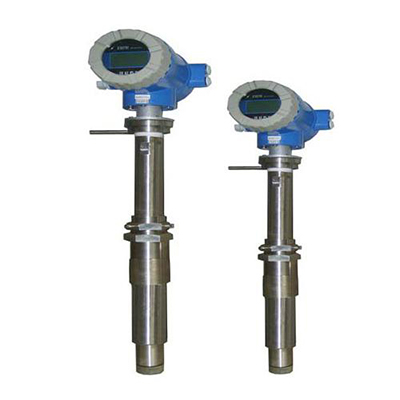Plug in electromagnetic flowmeter
- Tel:0550-7989666、0550-7989999
- Fax:0550-7989666
- Mail:tkjd@tiankang.com
Description
I. Product Overview
The plug in electromagnetic flowmeter is an inductive instrument for measuring the volume flow of conductive fluid. The LDE plug-in electromagnetic flowmeter is a new type of fluid flow meter developed on the basis of pipe type electromagnetic flowmeter. On the basis of retaining the advantages of the pipe type electromagnetic flowmeter, aiming at the defects of installation and difficulty of the pipe type electromagnetic flowmeter in large pipelines, according to the principle of NIKURADS, the volume flow of the fluid is obtained by measuring the average flow velocity of the fluid by electromagnetic method. In particular, the inserted electromagnetic flowmeter can be installed under the condition of no stopping (water), and can also be installed on cast iron pipes, cement pipes and PE pipes, especially when the pressure mounting technology is applied. The successful development of plug-in electromagnetic flowmeter provides a new means for measuring fluid flow.
Two. Characteristics:
Plug in electromagnetic flowmeter has the advantages of installation and price in the flow measurement of large pipes.
The converter is optimized in design, compact in structure and easy to install electrically. The transducer and sensor have interchangeability and can freely change the measuring range (0.5m/s to 10m/s).
The instrument applies the principle of "automatic return to zero" to eliminate electrochemical interference signals and zero self stabilization.
The converter and sensor have various protection levels and installation methods. There are IP68 grades suitable for diving installation.
It is suitable for measuring the liquid flow rate of water, sewage, acid and strong alkali with conductivity above 5 s/cm. It is especially suitable for measuring the flow of water supply and drainage pipelines.
The measurement of flow is only related to the insertion depth, so the flowmeter has wide versatility and strong interchangeability. One model can be applied to the fluid measurement requirements of various specifications of pipelines.
Three. Instrument selection
| Model | caliber | |||||
| 15~2600 | ||||||
| Code name | Electrode materials | |||||
| K1 | 316L | |||||
| K2 | HB | |||||
| K3 | HC | |||||
| K4 | titanium | |||||
| K5 | tantalum | |||||
| K6 | Platinum alloy | |||||
| K7 | Stainless steel coated tungsten carbide | |||||
| Code name | Lining material | |||||
| C1 | Polytetrafluoroethylene F4 | |||||
| C2 | Polyfluoroethylene propylene F46 | |||||
| C3 | Polyfluorinated ethylene FS | |||||
| C4 | Polybutadiene rubber | |||||
| C5 | Polyurethane rubber | |||||
| Code name | function | |||||
| E1 | Level 0.3 | |||||
| E2 | Level 0.5 | |||||
| E3 | Level 1 | |||||
| F1 | 4 to 20 ad, the load is less than 750 ohm. | |||||
| F2 | 0-3khz, 5V active, variable pulse width, output effective frequency. | |||||
| F3 | RS485 interface | |||||
| T1 | Normal temperature type | |||||
| T2 | High temperature type | |||||
| T3 | Ultrahigh temperature type | |||||
| P1 | 1.0MPa | |||||
| P2 | 1.6MPa | |||||
| P3 | 4.0MPa | |||||
| P4 | 16MPa | |||||
| D1 | 220VAC + 10% | |||||
| D2 | 24VDC + 10% | |||||
| J1 | One size structure | |||||
| J2 | Split structure | |||||
| J3 | Explosion-proof structure | |||||
Example: select a in-situ display plug-in electromagnetic flowmeter to measure sewage, the user pipe is DN50, require rubber material lining, stainless steel electrode, 4 ~ 20mA output, no communication, upper limit flow is 30m3/h. The model should be LDE 50S M1X100 - 30.
2. selection of electrode materials
The material of electrode should be selected according to the corrosiveness of the tested fluid. Please consult the manual, and conduct corrosive tests for special fluids.
Material Science | Code name | Corrosion resistance |
316L | V | 1 it is suitable for industrial, domestic water, raw water, municipal sewage and other neutral solutions. |
Hastelloy C | HC | 1 it is suitable for the mixture of oxidizing acid, mixed acid, chromic acid and sulfuric acid. |
Hastelloy B | HB | 1 good corrosion for non oxidizing acids, bases, salts such as sulfuric acid, phosphoric acid and hydrofluoric acid. |
titanium | Ti | Seawater resistance, all kinds of chloride corrosion of hypochlorite and various hydroxides suddenly. |
tantalum | Ta | In addition to hydrofluoric acid, it is almost capable of corrosion of all chemical mediums.But the price is high. |
platinum | Pt | Suitable for all acid-base salt solutions. |
Tungsten carbide | W | It has excellent wear resistance. It is specially used for wear media such as mud and pulp. |
3. selection of lining materials
The lining material should be selected according to the corrosive wear and temperature of the tested medium.
Lining material | Corrosion resistance | working temperature | Scope of application | ||
Neoprene Ne | Corrosion resistance to ordinary low concentration acid base salt | -20 ~ 70 C | Low concentration acid-base salt for industrial wastewater | ||
Polyurethane rubber PO | It has excellent wear resistance. It is specially used for strong wear slurry and is not resistant to decay. | -10 ~ 60 C | Liquid containing solid particles (cement slurry, etc.) | ||
Polyfluoroethylene propylene FEP | 1 heat resistance and corrosion resistance are equivalent to PTFE. | -40 ~ 180 C | All fluids except mortar and other strong wear media.Like PTFE, it can be used in beverage and other hygienic medium. | ||
Polytetrafluoroethylene PTFE | It is almost resistant to corrosion of all chemical mediums and poor wear resistance. | -40 ~ 180 C | It can not be used for negative pressure pipes and wear resistant fluids. |


